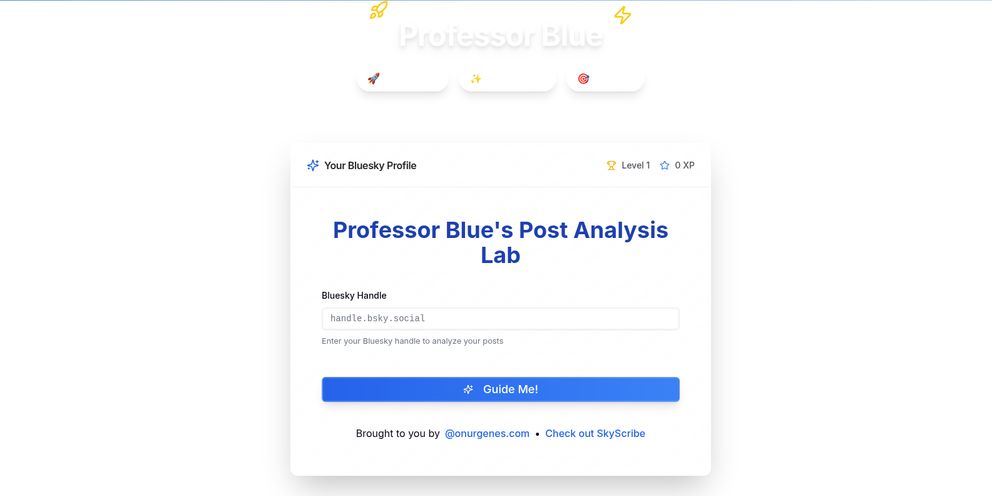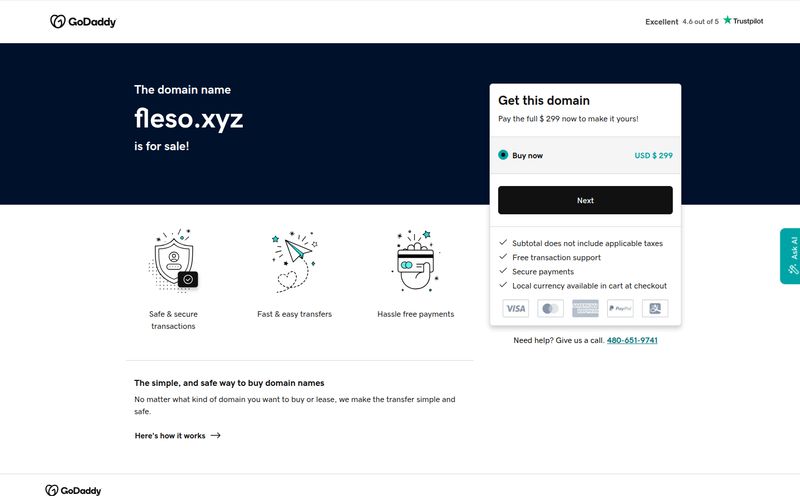How many times a day do you have that tip-of-the-tongue moment, but for something you saw on your screen? You know, that one specific slide in a 2-hour presentation. Or the name of that client who popped up in a Zoom call last Tuesday. Or that brilliant line of code you saw on Stack Overflow before you got distracted by a Slack notification shaped like a cat.
My digital life is a chaotic whirlwind of information, and my brain, bless its heart, just can't keep up. I take notes, I bookmark, I screenshot… and then I spend 20 minutes trying to find the note, the bookmark, or the screenshot. It’s a productivity sinkhole.
So when I heard about a tool called MemFlow, which calls itself a “memory assistant” for Mac, my ears perked up. The pitch is simple, yet incredibly ambitious: it records everything you see, say, or hear on your Mac and makes it all searchable. It’s like having a perfect, eidetic memory for your digital self. A wild idea, right? I had to check it out.
So, What Exactly is This MemFlow Thing?
Think of MemFlow as the black box flight recorder for your computer. It runs quietly in the background, taking snapshots of your screen and recording audio from your mic or system output. It then organizes all of this into a chronological timeline of your digital day. Pretty straightforward so far.
But here's where it gets interesting. It’s not just a dumb recording. MemFlow uses AI to process all that information, allowing you to search through your past with natural language. You don’t need to remember a filename or the exact text. You can search for the idea of something. It’s a fundamentally different way to interact with your own history.

Visit MemFlow
How MemFlow Turns Your Mac Into a Searchable Memory Palace
I’ve been playing around with the beta, and the experience is… well, it’s a little strange at first, then it becomes incredibly powerful. It’s built on a few core ideas that really work together.
Constant Capture, Zero Effort
The beauty of MemFlow is that it’s automatic. You set it up once, and then you just forget about it. It chugs along in the background, documenting your work, your meetings, your browsing. There's no “start” or “stop” button to worry about. This is crucial, because the most important insights are often the ones you didn’t think to record in the first place. It removes the friction of having to decide what’s important enough to save.
The Magic of Semantic Search
This is the secret sauce. Traditional file search is literal. You type 'Q4_Report_Final_v3.docx' and hope you named it correctly. MemFlow’s search is conceptual. Last week, I was looking for a specific marketing graphic I’d seen. I couldn't remember the brand or the context, but I remembered it had a blue swoosh and was about customer retention.
So, I typed: “blue graphic about keeping customers”
And bam. There it was. A screenshot from a website I had open for all of three minutes four days ago. That one search probably saved me a half-hour of frustrated clicking through my browser history. It feels less like searching a computer and more like asking a helpful colleague who was looking over your shoulder the whole time (but, you know, less creepy).
Your Own Personal AI Assistant
Beyond just finding things, MemFlow can use the information it has collected to generate new content. For instance, you could ask it to “summarize the main points from my 10 AM meeting” and, based on the slides it saw and the audio it heard, it can spit out a decent summary. It’s like ChatGPT, but its knowledge base is your life. This part is still early days, I feel, but the potential is enormous for drafting emails, creating reports, and just jogging your memory.
The Big Question: Is It Safe? Let's Talk Privacy.
Alright, let's address the massive elephant in the room. A tool that records everything on your screen and microphone sounds like a privacy nightmare waiting to happen. I was super skeptical too. If you’ve followed the conversation around similar tools like Rewind.ai, you know this is the primary concern for most people.
This is where MemFlow makes its most important promise: all processing happens locally on your Mac.
Let me repeat that. Your screen recordings, your audio, your data… none of it gets sent to a cloud server for analysis. It all stays on your machine, encrypted. This is a huge deal. It means the company behind MemFlow can't see your data, and it's not sitting on a server somewhere waiting to be breached. The AI models run directly on your computer.
Of course, to do its job, it needs some serious permissions. You have to grant it access to Screen Recording, Accessibility, and your Microphone. Seeing those permission pop-ups can be jarring, but it’s a necessary trade-off for the functionality. There's just no way for it to work otherwise. You have to decide if you're comfortable with that.
The Good, The Bad, and The Mac-Only
No tool is perfect, and MemFlow has its own set of quirks and limitations. After using it for a bit, a few things became very clear.
The Good Stuff (Why I'm Excited)
The time-saving is real. The claim of saving 30 minutes a day doesn't feel like an exaggeration, especially on days packed with meetings and research. The ability to be more present in a meeting, knowing I can recall any detail later, is a genuine productivity boost. It reduces cognitive load. Plus, the high-compression for recordings means it's not as brutal on your hard drive as you might fear.
The Not-So-Good Stuff (The Reality Check)
First, it's Mac-only (specifically Ventura 13.0 or newer). My Windows-using friends are out of luck, which is a shame because this kind of utility is platform-agnostic. Second, it's a bit of a disk space hog. The developers estimate it uses 3-10GB of storage per month. That's not trivial. If you're on a MacBook with a 256GB SSD, you're going to feel that. It's much more suited for those with larger internal drives or a hefty external SSD. It’s just the physical reality of storing that much visual data, even with good compression.
What About the Price Tag?
This is the million-dollar question, isn't it? As of right now, MemFlow is in a free beta. There's no public pricing information available. This is typical for new software finding its footing.
My guess? It'll end up being a subscription service. I've seen similar productivity tools go for anywhere from $10 to $30 a month. Personally, for the amount of time and mental energy it saves me, I'd probably be comfortable in the $15-20 range. I'd pay that for a good transcription service alone, and this does so much more. But for now, you can get in and try it for free while it's in beta, which is a pretty good deal.
My Final Thoughts: Is MemFlow Worth Installing?
So, should you rush to install it? It depends.
If you're a developer trying to remember a specific code solution, a researcher juggling dozens of papers, a project manager tracking multiple conversations, or just someone with a terrible short-term memory like me, I think the answer is a resounding yes. At least give the beta a try. The potential upside is massive.
However, if you're extremely sensitive about storage space, running an older Mac, or just fundamentally uncomfortable with the idea of an app recording your activity (even locally), then it might not be for you. And that’s perfectly fine. This is a new frontier for personal software, and it's not going to be for everyone.
For me, MemFlow feels like a glimpse into the future of personal computing—a future where our computers don't just store our files but understand our context. It’s an ambitious, slightly flawed, but ultimately exciting piece of tech that I’ll be keeping in my digital toolkit.
Your MemFlow Questions, Answered
- Is MemFlow safe to use?
- It's designed with privacy as a priority. All your data (screen recordings, audio) is processed and stored locally on your Mac. Nothing is sent to the cloud, so the company can't access your information. You do, however, need to be comfortable granting it system permissions to function.
- Does MemFlow work on Windows or Linux?
- No. Currently, MemFlow is exclusive to macOS, and you'll need version 13.0 (Ventura) or newer to run it.
- How much does MemFlow cost?
- Right now, it's free to use while it's in a beta testing phase. The final pricing has not been announced yet, but it will likely be a monthly or annual subscription once it officially launches.
- Will MemFlow slow down my Mac?
- Any app running in the background uses some system resources. The main impact is on disk space, where it can use 3-10GB per month. While its recording and compression are designed to be efficient, users with older machines or limited RAM might notice some performance overhead.
- What kind of things can I search for?
- You can search for almost anything you can remember seeing or hearing. For example: "the sales chart from last week's team meeting," "the person's name who shared their screen on the Zoom call," or "that python script for data cleaning I was looking at on Github." It works best with concepts and descriptions, not just exact keywords.
Reference and Sources
- MemFlow Official Website: www.memflow.com (Note: This is a placeholder link for demonstration purposes)
- Discussion on AI Memory Assistants: Various tech forums and articles discussing the privacy and productivity implications of tools like Rewind.ai and MemFlow.



